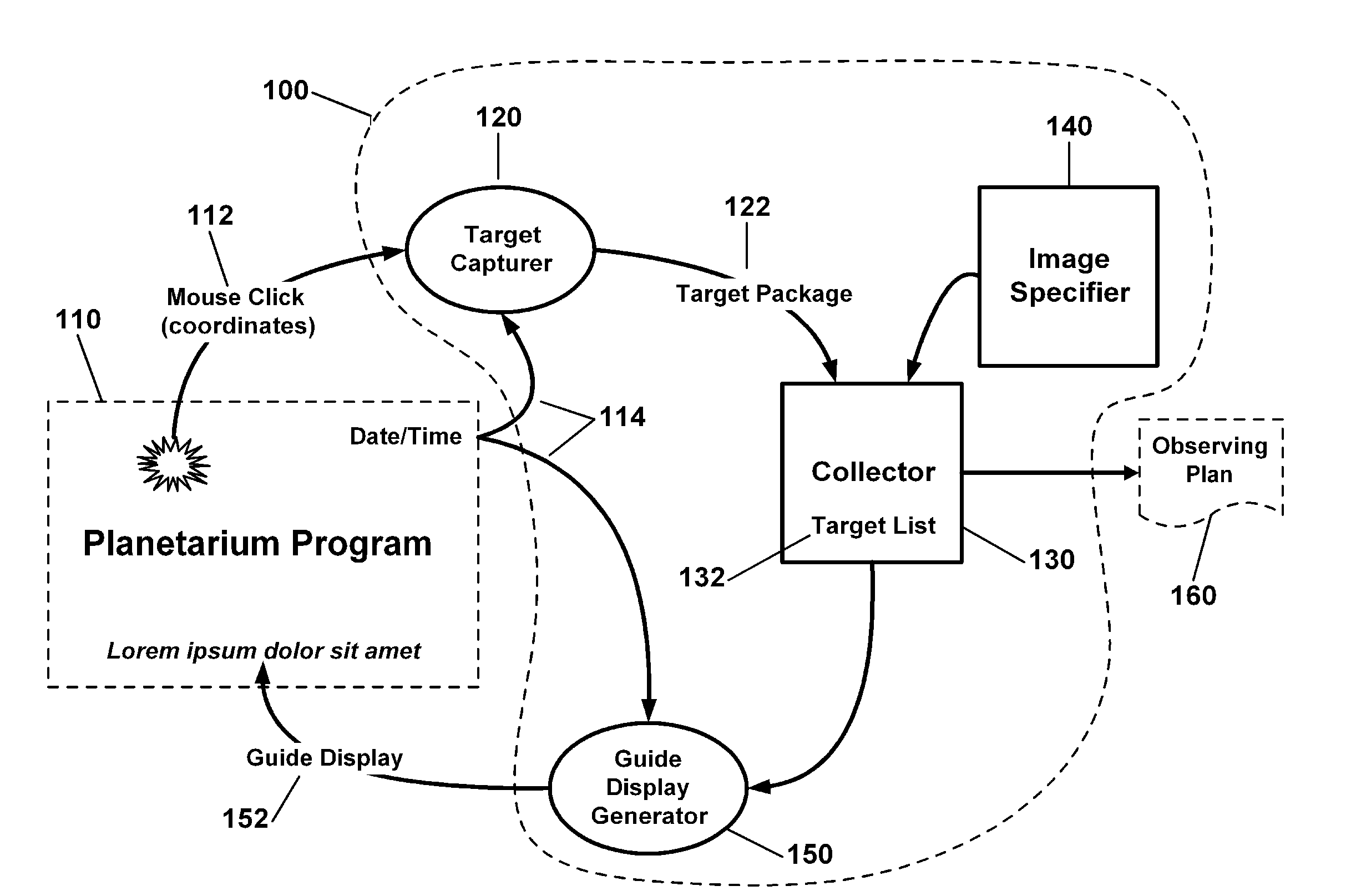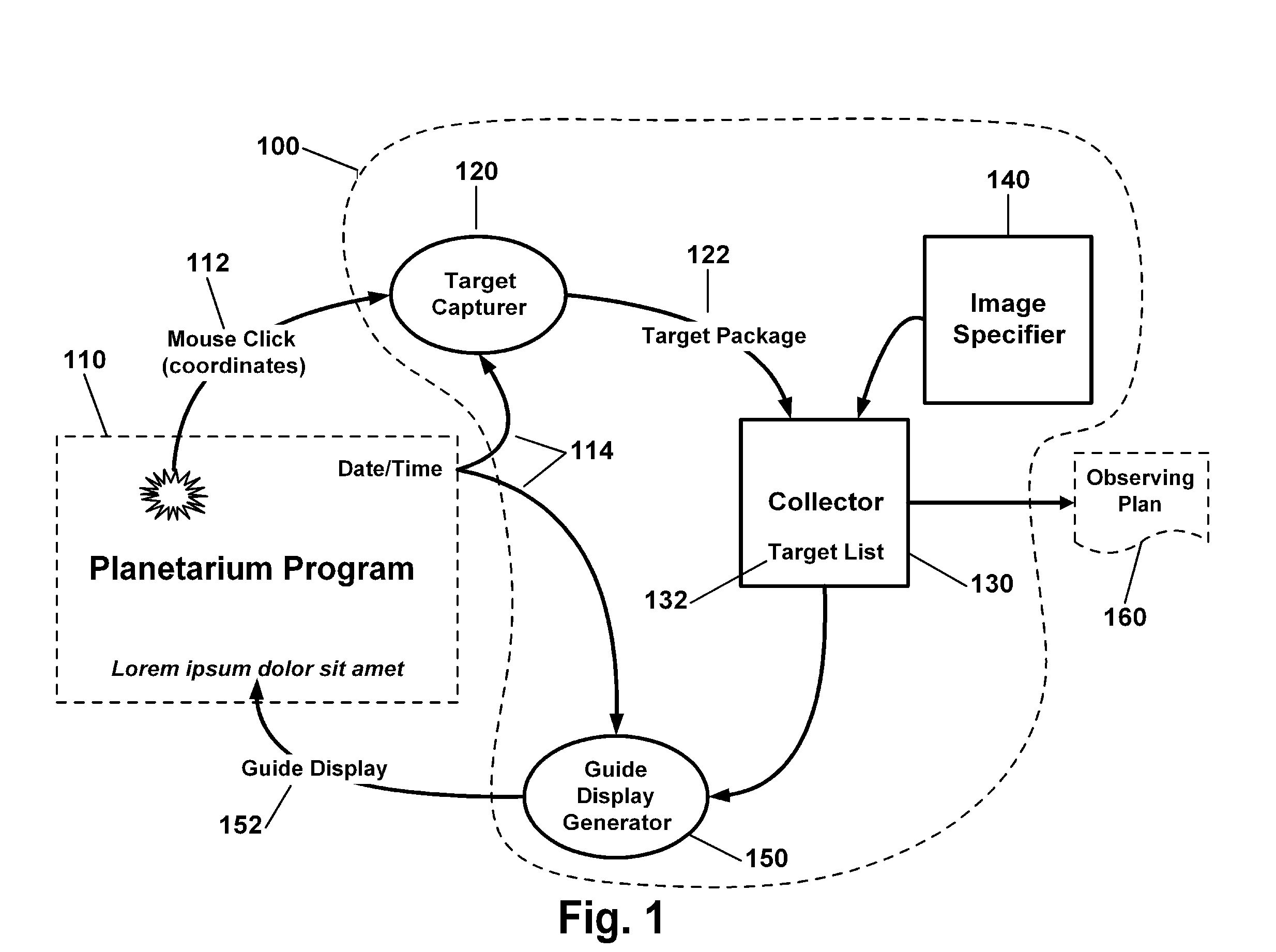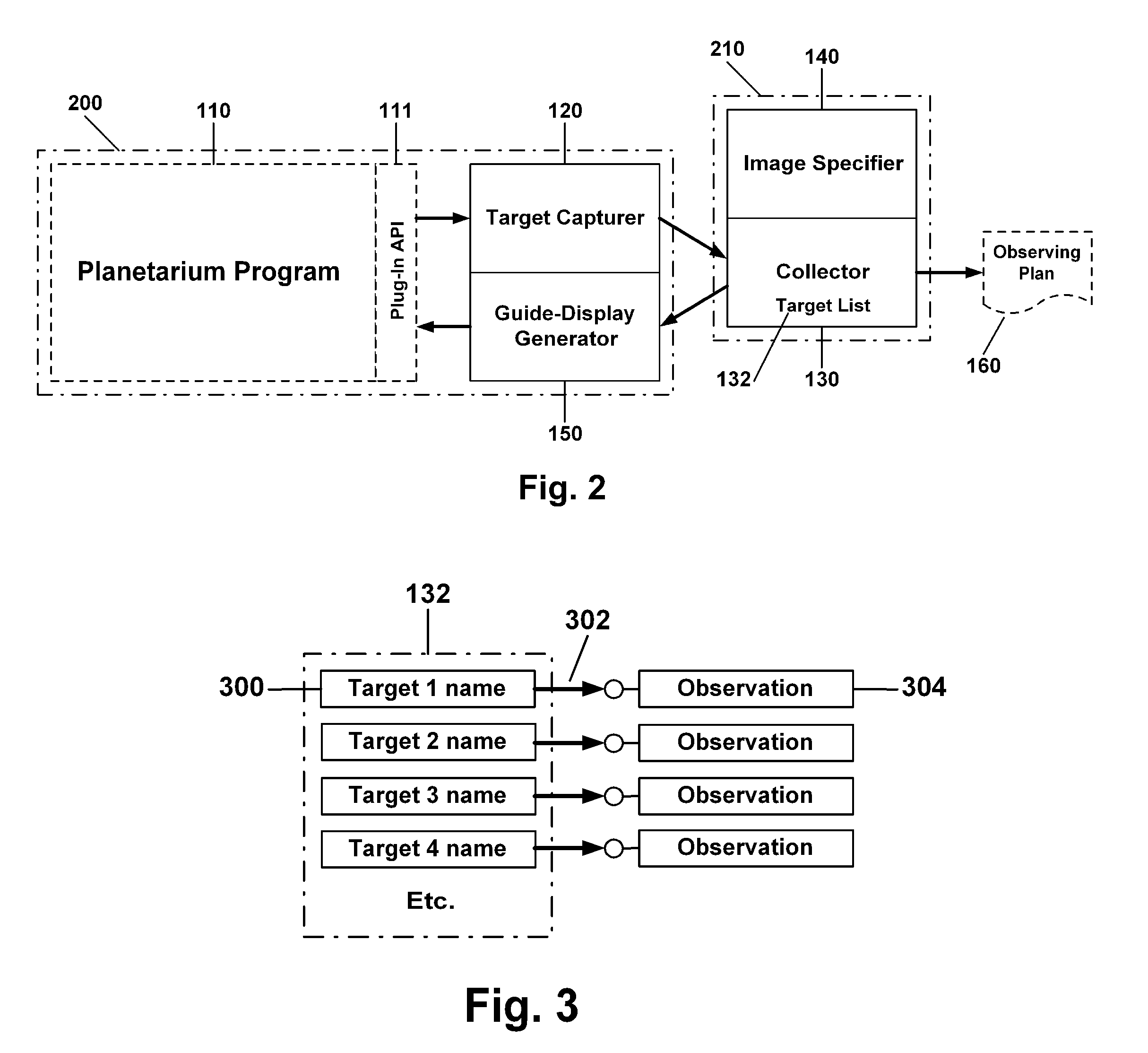Method and system for creating astronomical observing plans for automated observatories
a technology of automated observatories and astronomical observation plans, applied in the field of astronomy, can solve the problems of many minutes or hours, affecting the image acquisition efficiency of the object, and the exposure time of the image is usually from seconds to minutes,
- Summary
- Abstract
- Description
- Claims
- Application Information
AI Technical Summary
Benefits of technology
Problems solved by technology
Method used
Image
Examples
Embodiment Construction
[0025] The present invention is preferably implemented entirely in computer software. Referring to FIG. 1, the method is implemented within region 100 as the preferred system, which receives from the planetarium 110 the coordinates 112 of a selected target and the time of the planetarium's current display 114, and which sends to the planetarium continuously updated guide-display message 152 that is derived from a user-supplied set of targets and images to be acquired of each target. Furthermore, on user command the system generates and produces the observing plan 160 and preferably writes the plan 160 to a computer disk file in the format required by the robotic observatory to be used.
[0026] In particular, within the system 100, the target capturer 120 receives from the planetarium 110 the coordinates 112 of user-selected targets and the planetarium time 114, and then packages these data items as a target package 122 for transmission to the collector 130. Upon receipt of a target p...
PUM
 Login to View More
Login to View More Abstract
Description
Claims
Application Information
 Login to View More
Login to View More - R&D
- Intellectual Property
- Life Sciences
- Materials
- Tech Scout
- Unparalleled Data Quality
- Higher Quality Content
- 60% Fewer Hallucinations
Browse by: Latest US Patents, China's latest patents, Technical Efficacy Thesaurus, Application Domain, Technology Topic, Popular Technical Reports.
© 2025 PatSnap. All rights reserved.Legal|Privacy policy|Modern Slavery Act Transparency Statement|Sitemap|About US| Contact US: help@patsnap.com



